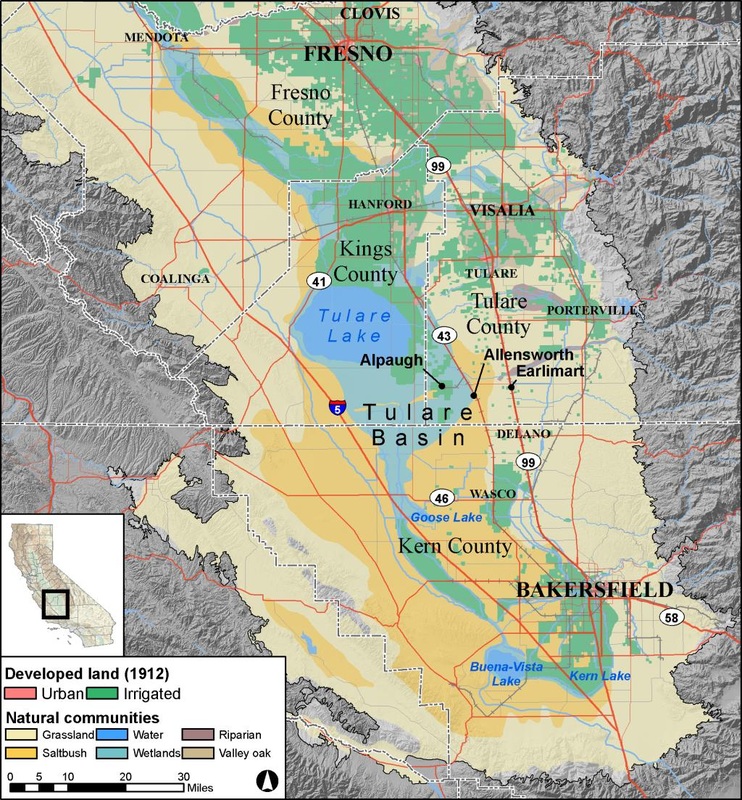Hydrologic History of the Tulare BasinThe Tulare Basin historically supported an amazing complex of wetland habitats, unique in the world. This largely flat and arid region served as the floodplain for water flowing west from the southern Sierra Nevada, north from the Transverse Ranges, as well as from small intermittent arroyos flowing east from the Coast Ranges. Oak woodlands and riparian forests formed green corridors across the broad prairie on the eastern edge of the Tulare Basin. Freshwater tule marshes and alkaline wetlands adorned the slow-moving sloughs and shallow margins of Kern, Buena Vista, Goose, Tulare, and Summit lakes. Emergent marsh vegetation, such as tules and cattails, grew in permanent standing water at the shallow edges of freshwater wetlands. Upslope from the marshes, water intermittently flooded iodine bush scrub and alkali grassland habitats.
This highly-productive, shallow water system supported abundant populations of endemic lake-adapted fishes such that American white pelicans (Pelacanus erythrorhynchos) nested by the thousands on islands in Tulare Lake and Buena Vista Lake. The Tulare Basin's extensive wetland habitats historically attracted significant numbers of resident and migratory waterbirds, including grebes, pelicans, cormorants, herons, egrets, ibises, geese, swans, ducks, rails, sandhill cranes, plovers, stilts, avocets, sandpipers, phalaropes, gulls, and terns. The conversion of this water system to a lake-and-slough wetland to agriculture began in the mid-1800s when European settlers began to build canals and diversion structures to irrigate their crops. This early irrigation infrastructure upstream from Tulare Lake slowly cut off the lake from its source waters, shrinking the lake's footprint. By 1899 - less than 50 years after irrigation was initiated - Tulare Lake went dry for the first time in history. Settlers filed land claims for this "newly appeared" farmland and continued to build structures and modify natural waterways to control water flow and minimize flooding. Conversion of the lakebed proceeded rapidly with levee construction and the formation of reclamation districts. The Tulare lakebed has remained dry for most of the twentieth century, but whenever heavy runoff brings water back to the area, most of the waterbirds that comprised the historic avifauna of the region returned in impressive numbers to the wetlands of the Tulare Basin. Read more about the Hydrology of water in the Tulare Basin. Read about Habitats and Species in the Tulare Basin. |

|
|



